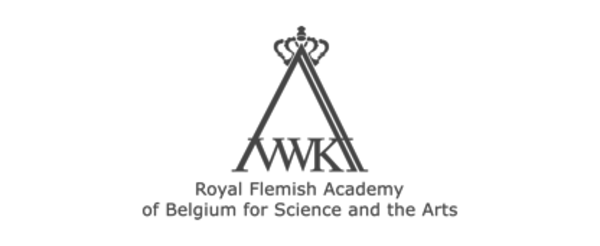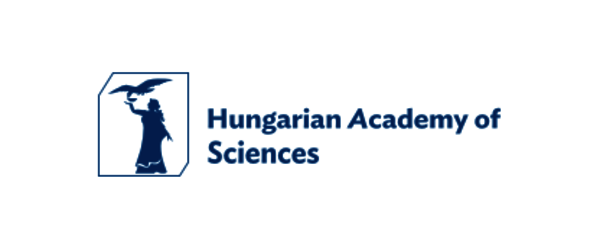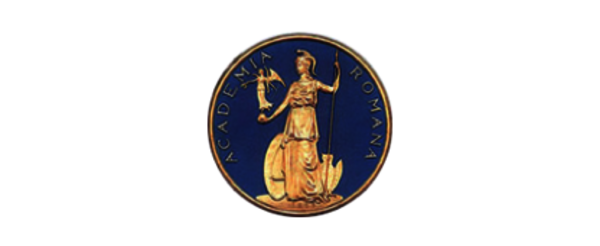News & Academies' activities
Arctic warming and microbial threats: perspectives from IAP and EASAC following an international academies’ workshop
Contact person: Robin Fears, (robin.fears@easac.eu), Director, Biosciences Programme, EASAC and Project Coordinator, IAP
The US National Academies of Sciences, Engineering, and Medicine (NASEM) together with the InterAcademy Partnership (IAP) and the European Academies Science Advisory Council (EASAC) recently convened an international workshop[1] bringing together an interdisciplinary group of participants – researchers and public health officials - from across North America, the European Union and Russia. Workshop participants explored what is known, and what critical knowledge gaps remain, regarding existing and possible future risks of harmful infectious agents emerging from thawing permafrost and ice in the Arctic region.
According to the authoritative worldwide assessment by the Intergovernmental Panel on Climate Change (IPCC), the Arctic has experienced rapid climate change during the last 30 years, and future temperature increases in the region are projected to be significantly greater than the global average. The relevance of Arctic climate change to health applies both to those living in the Arctic and to those susceptible to the implications of Arctic changes elsewhere, for example in consequence of sea level rise, diminishing snow cover accelerating global warming from albedo loss, and the possibility of discharge of pollutants and disease strains from melting ice and snow.
A recent report by EASAC (2019), covering a wide range of climate effects on human health in Europe, noted the possibility of (re-)emerging infectious disease in consequence of pathogen release from thawing permafrost. EASAC also identified opportunities for partnership between the Arctic and other regions to improve the knowledge base for climate change adaptation and mitigation for continued ecosystem integrity, including actions to minimise risks of infectious disease.
The recent NASEM-EASAC-IAP workshop ranged widely in exploring what is already known about permafrost, its microbial ecology and the implications for warming in uncovering ancient pathogens and infected human and animal historical remains. Discussants considered likely determinants of microbial viability, compared methods of detection, and examined potential risk of human and animal exposure to microbial threats. The workshop included case studies of known risks such as the Arctic region anthrax outbreak and the discovery of smallpox and influenza virus sequences in recovered ice samples. Workshop participants discussed gaps in scientific understanding across the disciplines and in surveillance capabilities and new scientific opportunities and tools for monitoring and responsiveness, with the objectives to improve biosafety risk assessment and management and further develop the international collaboration that must also actively involve indigenous communities.
A publication of workshop proceedings, being prepared by NASEM, on behalf also of IAP and EASAC as co-organisers, will cover the workshop presentations and discussions in detail. The present recital by IAP highlights selected points from the workshop (and other salient literature) that resonate with previous IAP work and that, from the IAP and EASAC perspectives, are particularly relevant for further follow-up by the academies at the international level.
What are the key issues for IAP?
Integrating knowledge about Arctic thawing
Circumpolar permafrost currently extends to about 37% of the northern hemisphere[2]. Permafrost contains much organic material, varying according to age and location. Globally, about 35 million people live in the permafrost zone. Permafrost is warming at a global scale (Oliva and Fritz, 2018; Biskaborn et al. 2019). High latitudes are experiencing substantial warming and significant seasonal changes: 60% thaw can be expected by 2100, and the changes have been recently reviewed by the Joint Research Centre of the European Commission (Dobricic and Pozzoli, 2019). Indigenous populations are already experiencing changes in ice patterns affecting travel routes, as well as increasing wildfires, increasing industrial development and changes in wildlife populations.
The ecosystem changes are complex and require integrating information on Arctic conditions from different disciplines, sectors and sources. Traditional knowledge, including systematic observation of environmental changes by indigenous populations[3], is of major importance in helping to understand diversity of the ecosystems and the potential for emerging microbial threats. Combining traditional knowledge with scientific knowledge should help to achieve better-informed and more timely and effective decision-making in the Arctic (Kutz and Tomaselli, 2019). More generally worldwide, indigenous knowledge has often been neglected in framing the Sustainable Development Goals (SDGs) (Li-Ming Yap and Watene, 2019) but the UN Department of Economic and Social Affairs[4] has now emphasised this crucial role. Recent work by IAP on the SDGs (IAP, 2019) notes the importance of indigenous knowledge for open policy making, drawing on previous work on responsible conduct in research (IAP, 2012), that recognised the value of encompassing diversity in sources of information.
Consequences for infectious disease
Anthropocene changes in infectious disease in the Arctic may result from increases in food-borne and water-borne infections, changing distribution of animal populations (e.g. as carriers of rabies), the expanding northern limit of vector-borne diseases (e.g. West Nile Virus, tick-borne encephalitis)[5], the potential increase in microbial replication rates, and the potential release of pathogens from thawing permafrost (see, for example, the reviews by Parkinson et al. 2014 and Waits et al. 2018).
Many human diseases are zoonotic in origin (for example, in the Russian Arctic, including tick-borne encephalitis, tularemia, brucellosis, leptospirosis, rabies and anthrax, Revich et al. 2012). Animal infectious diseases are also a concern with regard to indigenous community food security, where key species include reindeer, bison and caribou. Moreover, animals may be important sentinel species for monitoring of infection (and as amplifying hosts) and, thereby, provide early information on risk to human populations. It is also worth noting another recent impact of Arctic warming on animal infectious disease: Arctic ice melting facilitated phocine distemper virus spread from the Atlantic to Pacific (Alaska) seal and sea otter populations (VanWormer et al. 2019).
What might be other (re-)emerging infectious diseases? Research to identify the permafrost origins (in historic cattle burial grounds) of anthrax as a potential source for new outbreaks in Russia has received particular publicity (Revich and Podolnaya, 2011; Walsh et al. 2018). Research has also revealed traces of, for example, novel giant viruses (e.g. Legendre et al. 2014). Today’s technologies are now better able to discover both viruses and fragmented DNA sequences and to assess potential antimicrobial resistance. For example, recent research has characterised acanthamoeba-killing viruses (from sites sampled from end of the Neanderthal era) and metagenomics sequencing discloses further great diversity in bacteria and viruses. The question as to whether DNA viruses can remain resilient and infectious after long periods in permafrost containment continues to be an active area of research.
The drivers of infectious disease spread can be broadly categorised in terms of environmental changes, socio-demographic changes and preparedness of public health systems. With regard to the latter, for example, changes in European trans-boundary spread of infectious disease threats can be related to national public health core capacities (Semenza et al 2019), helping to identify opportunities for capacity-building for national and regional preparedness. Calculating communicable disease risk assessment for risk management and communication depends on both hazard identification and exposure assessment (EASAC, 2019). Thus, in addition to understanding the microbial hazard it is also necessary to assess the local habitat conditions (ecological niche modelling) and probabilities of pathogen survival and transmission. The workshop discussions included approaches to risk assessment, including opportunities for improved laboratory procedures and their biocontainment, the needs for special surveillance (including syndromic surveillance), and for standardisation, including in measuring impacts on indigenous communities. Approaches to surveillance of known pathogens are well-established in theory although there may be practical impediments, but assessing the likelihood of emergence of unknown or eradicated pathogens is difficult because there have been few prior events with which to determine probability.
While most of this workshop discussion focused on biosafety risks (associated with inadvertent exposure to pathogens), the potential for biosecurity risks (associated with deliberate release of pathogens) was also noted. Biosecurity risks of pathogens have previously been discussed in detail by NASEM, EASAC and IAP in the context of other bioscience developments (IAP et al. 2018).
The impacts of climate change on infectious disease may be compounded by other very large contemporary changes that increase the human presence in the Arctic, e.g. the introduction of massive industrial development associated with mining and energy production, and the rapid rise in numbers of tourists visiting remote locations. Seasonal workers and other visitors may bring new problems such as drug-resistant tuberculosis.
Global implications
The Arctic region has not hitherto been highly visible in maps of global hotspots for infectious disease risk. However, a case can now be made that the Arctic is increasingly relevant because of its rapid pace of warming and development – while it is frozen now it won’t necessarily be in the future. In addition to understanding this potential contribution to global health risk, IAP recognises that the strategic actions suggested for research and improved public health in the Arctic are also generally pertinent for application elsewhere in the world to ensure coordinated preparedness and responsiveness. Thus, IAP perceives globally-relevant priorities as including:
- Engaging researchers and health care providers with local communities to build trust, facilitating both access to traditional knowledge and citizen science, and supporting translation of research outputs to community information and practice.
- Developing standardised surveillance systems. Among the requirements are (i) building capacity in remote areas (e.g. equatorial regions as well as the Arctic)[6], appreciating the cultural context and enabling clinical samples to be sent to and analysed by reference laboratories; (ii) compilation of biological archives to include baseline clinical samples; (iii) proactive introduction of early warning systems; and (iv) harmonisation of reportable diseases worldwide.
- Recognising the need to invest in basic research e.g. on environmental triggers – what causes a microbial species to jump from the environment into a sentinel species, and what enables its subsequent transmissibility and pathogenicity?
- Introducing One Health and Planetary Health perspectives into reporting and response systems: developing coherence and capacity in multi-sectoral surveillance and control programmes (Ruscio et al. 2015), transcending borders, for public health, and for animals used as food sources and other wildlife, at a time of multiple pressures on environmental health.
- Doing more to connect and consolidate multiple, diverse regional research projects, and sharing of novel technologies e.g. for remote sensing and data mining. The experience in the Arctic also reveals the need to do more to ensure efficient mechanisms to exchange samples and research data between countries (see also next bullet item).
- Exploring opportunities for public-private partnership to build sustainable enterprises for health and for other innovation. For example, microbiomes (especially extremophiles) can be a resource for bioprospecting and development of the bioeconomy but it is vital to take account of international rules and guidelines for accessing and sharing information of potential commercial value (e.g. the potential implications of the Nagoya Protocol for transfer of microbial samples and DNA sequences).
- Using data to inform policy development at local, regional and global levels, this requires both improving the interoperability of data and promoting interaction between scientists and policy-makers.
A recent inter-regional project initiated by IAP[7] to extend the work of EASAC (2019) on climate change and health will review climate-sensitive outcomes for human health in Africa, Asia, the Americas and Europe, with a focus on solutions for particularly vulnerable regions and populations. This new work by IAP, designed to add value to the extensive continuing activities of the IPCC[8], will be enhanced by drawing on the conclusions from the Arctic workshop and, it is intended, will help to catalyse further international discussion and action on some very important issues.
References
- Biskaborn BK et al. (2019). Permafrost is warming on a global scale. Nature Communications 10, 264
- Dobricic S and Pozzoli L (2019). Arctic permafrost thawing. JRC Science for Policy Report.
- EASAC (2019). The imperative of climate action to protect human health in Europe.
- IAP (2012). Responsible conduct in the global research enterprise.
- IAP (2016). Doing global science: a guide to responsible conduct in the global research enterprise.
- IAP (2019). Improving scientific input to global policymaking with a focus on the UN Sustainable Development Goals (SDGs).
- IAP, EASAC, NASEM and the German National Academy of Science Leopoldina (2018). Assessing security implications of genome editing: emerging points from an international workshop.
- Kutz S and Tomaselli M (2019). “Two-eyed seeing” supports wildlife health. Science 364, 1135-1137.
- Legendre M et al. (2014). Thirty-thousand-year-old distant relative of giant icosahedral DNA viruses with a pandoravirus morphology. Proceedings of the National Academy of Sciences USA 111, 4274-4279.
- Li-Ming Yap M and Watene K (2019). The Sustainable Development Goals (SDGs) and indigenous peoples: another missed opportunity? Journal of Human Development and Capabilities 20, https://doi.org/10.1080/19452829.2019.1574725.
- Oliva M and Fritz M (2018). Permafrost degradation on a warmer Earth: challenges and perspectives. Current Opinion in Environmental Science & Health 5, 14-18.
- Parkinson AJ et al. (2014). Climate change and infectious diseases in the Arctic: establishment of a circumpolar working group. International Journal of Circumpolar Health 73, https://doi.org/10.3402/ijch.v73.25163.
- Revich BA and Podolnaya MA (2011). Thawing of permafrost may disturb historic cattle burial grounds in East Siberia. Global Health Action 4, 10.3402/gha.v4i0.8482.
- Revich B, Tokarevich N and Parkinson AJ (2012). Climate change and zoonotic infections in the Russian Arctic. International Journal of Circumpolar Health 71, https://doi.org/10.3402/ijch.v71.18792.
- Ruscio BA et al. (2015). One Health – a strategy for resilience in a changing arctic. International journal of Circumpolar Health 74, https://doi.org/10.3402/ijch.v74.27913.
- Semenza JC et al. (2017). Environmental suitability of Vibrio infections in a warming climate: an early warning system. Environmental Health Perspectives 125, https://doi.org/10.1289/EHP2198.
- Semenza JC et al. (2019). Systemic resilience to cross-border infectious disease threat events in Europe. Transboundary and Emerging Diseases 66, https://doi.org/10.1111/tbed.13211.
- VanWormer E et al. (2019). Viral emergence in marine mammals in the North Pacific may be linked to Arctic sea ice reduction. Scientific Reports 9, 15569.
- Waits A et al. (2018). Human infectious diseases and the changing climate in the Arctic. Environment International 121, 703-713.
- Walsh MG, de Smalen AW and Mor SM (2018). Climate influence on anthrax suitability in warming northern latitudes. Scientific Reports 8, 9269.
[1] National Academies of Science, Engineering and Medicine (NASEM, www.nationalacademies.org), European Academies Science Advisory Council (EASAC, www.easac.eu) and the InterAcademy Partnership (IAP, www.interacademies.org). The workshop “Understanding and responding to global health security risks from microbial threats in the Arctic” (Herrenhausen, Germany 6-7 November 2019) was organised with financial support from the Volkswagen Foundation (www.volkswagenstiftung.de), USAID Emerging Pandemic Threats Program, CDC National Center for Emerging and Zoonotic Infectious Diseases, NASEM Endowment Funds, United States Arctic Research Commission, Moore Foundation, Ending Pandemics, and Heising-Simons Foundation. It included researchers with expertise in the natural and social sciences, including anthropology. See http://nationalacademies.org/arcticmicrobialthreats, https://easac.eu/news/details/understanding-and-responding-to-global-health-risks-from-microbial-threats-in-the-arctic/. Twitter outputs on #Arcticmicrobe. For further information on the workshop and the Proceedings, please contact Lauren Everett, LEverett@nas.edu.
[2] See www.permafrostwatch.org for definitions and quantification of permafrost.
[3] For example, see the examples of citizen science provided in the LEO network of local observers of environmental change and unusual events, www.leonetwork.org.
[4] “Traditional knowledge – an answer to the most pressing global problems? News item 22 April 2019, www.un.org/development/desa/en.
[5] Another example, linking environmental and climatic change, is the modelling of the northward spread of Vibrio spp. with the risk predicted to reach the Arctic Circle (Semenza et al. 2017).
[6] Previous IAP work on responsible research has emphasised the importance of building local capacity worldwide in science and education (IAP, 2016).
[7]http://www.interacademies.org/57905/Climate-Change-and-Health.
[8] IAP has a history of interest in the work of IPCC, exemplified by the activity of the InterAcademy Council (now part of IAP) invited by the UN to review the processes and procedures of the IPCC, see the report, 2010 on http://www.interacademies.org/33389/Climate-Change-Assessments-Review-of-the-Processes-Procedures-of-the-IPCC?source=generalSearch.
back to overview
































